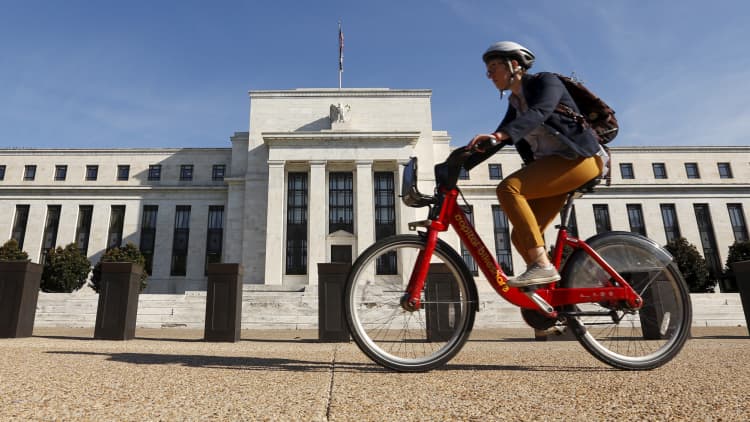
Banks moved full steam ahead on plans to return cash to investors after passing the second part of the Federal Reserve's stress tests on Wednesday – and that's only just the beginning, two experts told CNBC.
For the first time in seven years, the Fed didn't object to any of the capital plans of 34 banks it reviewed as part of the annual stress tests implemented as a result of the financial crisis.
"It's very exciting. And since the torture lasted eight years it's unlikely the pleasure is going to be all washed up in just a couple of years," Smead Capital Management CEO Bill Smead said in an interview with "Closing Bell" on Wednesday.
Several big banks announced substantial dividend hikes and stock repurchasing programs on Wednesday afternoon, including Citigroup, which doubled its dividend to 32 cents per common share and announced buybacks of up to $15.6 billion.
JPMorgan announced its biggest share buyback since the 2008 crisis — up to $19.4 billion between July 1 and June 30 next year. It also said it would raise its quarterly dividend by 6 cents to 56 cents a share.
"The next at least three years are going to be a period of catch up," said Tom Brown, CEO of Second Curve Capital, noting that banks are going to start to bring down the capital ratios that were brought "well above" the required minimums.
"The industry has really gone from being where the regulators were concerned about (being) undercapitalized to now at the point where they are so well overcapitalized it's crazy," he told "Closing Bell."
Another aspect to consider is the aging millennial population that will buy homes and make purchases, Smead pointed out.
"You get velocity of money picking up and they get little tiny nicks out of almost everything that happens and there's your leverage on top of that," he said.
As for how much banks could ultimately wind up paying out, Smead noted that at one time it was "totally common" for banks to pay 50 percent of its profits in dividends because they don't need to open new branches every year.
"There's not a lot of capital that needs to be reinvested," he said. "In fact, a lot of these folks are reducing their footprint and using technology to interact with their new customers. And so therefore cost structure is going down. So what do they need this capital for? It's just bloating the system."
—CNBC's Evelyn Cheng contributed to this report.
WATCH: Fed clears capital plans for all 34 banks



